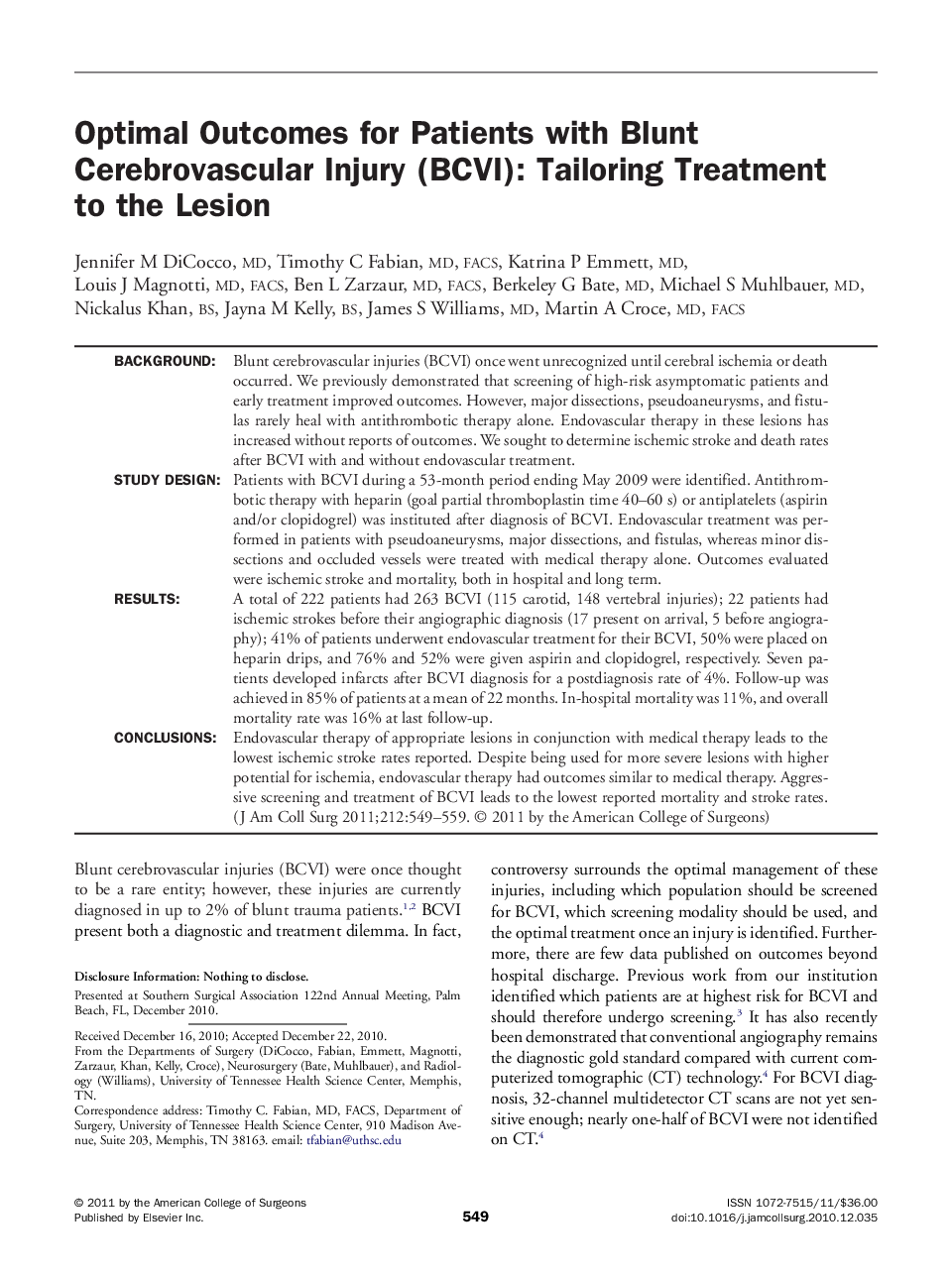| کد مقاله | کد نشریه | سال انتشار | مقاله انگلیسی | نسخه تمام متن |
|---|---|---|---|---|
| 4292663 | 1612274 | 2011 | 9 صفحه PDF | دانلود رایگان |

BackgroundBlunt cerebrovascular injuries (BCVI) once went unrecognized until cerebral ischemia or death occurred. We previously demonstrated that screening of high-risk asymptomatic patients and early treatment improved outcomes. However, major dissections, pseudoaneurysms, and fistulas rarely heal with antithrombotic therapy alone. Endovascular therapy in these lesions has increased without reports of outcomes. We sought to determine ischemic stroke and death rates after BCVI with and without endovascular treatment.Study DesignPatients with BCVI during a 53-month period ending May 2009 were identified. Antithrombotic therapy with heparin (goal partial thromboplastin time 40–60 s) or antiplatelets (aspirin and/or clopidogrel) was instituted after diagnosis of BCVI. Endovascular treatment was performed in patients with pseudoaneurysms, major dissections, and fistulas, whereas minor dissections and occluded vessels were treated with medical therapy alone. Outcomes evaluated were ischemic stroke and mortality, both in hospital and long term.ResultsA total of 222 patients had 263 BCVI (115 carotid, 148 vertebral injuries); 22 patients had ischemic strokes before their angiographic diagnosis (17 present on arrival, 5 before angiography); 41% of patients underwent endovascular treatment for their BCVI, 50% were placed on heparin drips, and 76% and 52% were given aspirin and clopidogrel, respectively. Seven patients developed infarcts after BCVI diagnosis for a postdiagnosis rate of 4%. Follow-up was achieved in 85% of patients at a mean of 22 months. In-hospital mortality was 11%, and overall mortality rate was 16% at last follow-up.ConclusionsEndovascular therapy of appropriate lesions in conjunction with medical therapy leads to the lowest ischemic stroke rates reported. Despite being used for more severe lesions with higher potential for ischemia, endovascular therapy had outcomes similar to medical therapy. Aggressive screening and treatment of BCVI leads to the lowest reported mortality and stroke rates.
Journal: Journal of the American College of Surgeons - Volume 212, Issue 4, April 2011, Pages 549–557